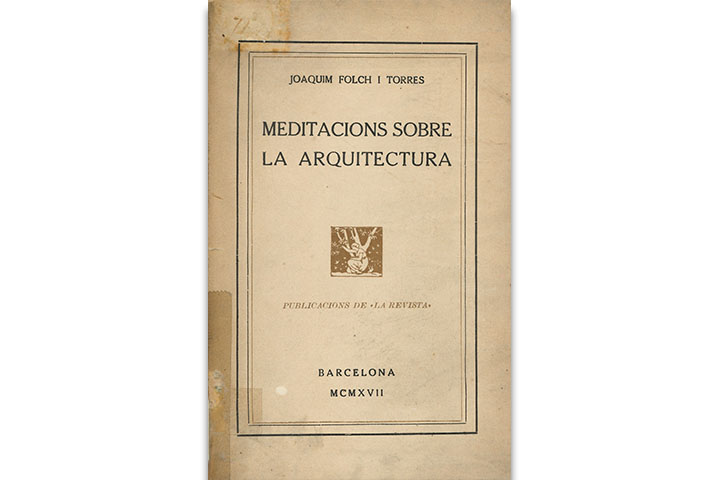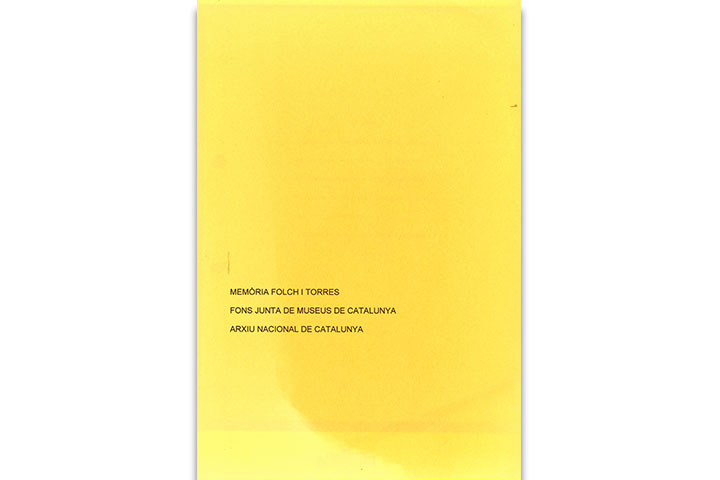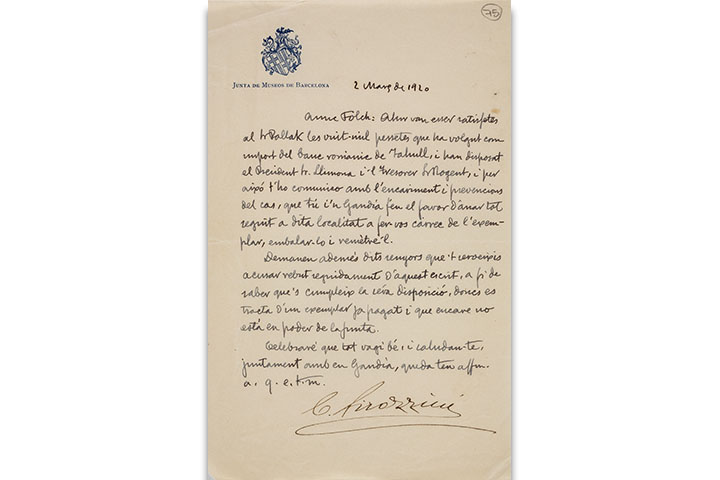Search
The building
The Palau Nacional, constructed for the International Exposition of 1929, is the location of the Museu Nacional d'Art de Catalunya. The Palau Nacional, which just about extends to 50,000 m2, is a building of major proportions, which relates to models of academic classicism of the period within the ambit of the universal exposition. Its façade is crowned by a large dome, inspired by that of St Peter’s of the Vatican; two lesser domes on either side, and four towers inspired by the Cathedral of Santiago de Compostella.
It is located on the hill of Montjuïc, a privileged setting from which you can enjoy magnificent and unique views of Barcelona. The front access to the Palau Nacional is reached by a major stone staircase from the avenue of Reina Maria Cristina, flanked half way up by the major luminous and monumental fountains by Carles Buïgas.
Read more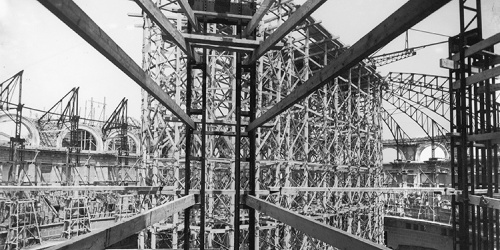
1907
Creation of the Board of Museums and discovery of the Romanesque mural painting
The Board of...
Read more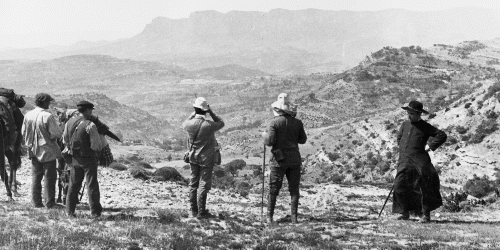
Fourth Conference: Collectors who have made museums
Read moreRead more
The exhibition of the year 1929 changed the layout of Barcelona. The city won the mountain of Montjuïc, which, over time, has become a place of leisure and culture for everyone.
Read more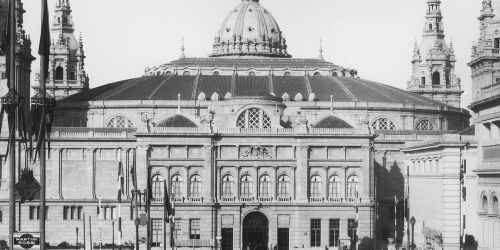
Topic guide "Joaquim Folch i Torres"
“Like Noah in the Ark, in January 1937, during our war, we put the best of our artistic heritage furniture in big lorries; the best example of each type, and we took them to Paris”.
Joaquim Folch i Torres
Destino, n. 1247 (1st July 1961), p. 17
Historian, museologist and art critic, Joaquim Folch i Torres (1886-1963) played a notable role in rescuing and safeguarding the artistic heritage, as well as in the acquisition of works for the art collections of Catalonia.
In 2013, among the events held in homage to the 50th anniversary of his death, the MNAC Library would be renamed the Joaquim Folch i Torres Library. We have produced this thematic guide to remember the person and his commitment towards Catalan art and culture.
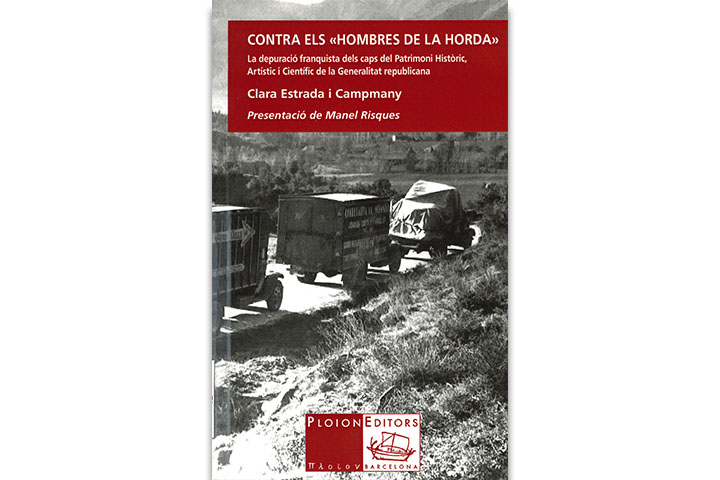
Estrada i Campmany, Clara
Barcelona: Ploion, 2008
136 pp.
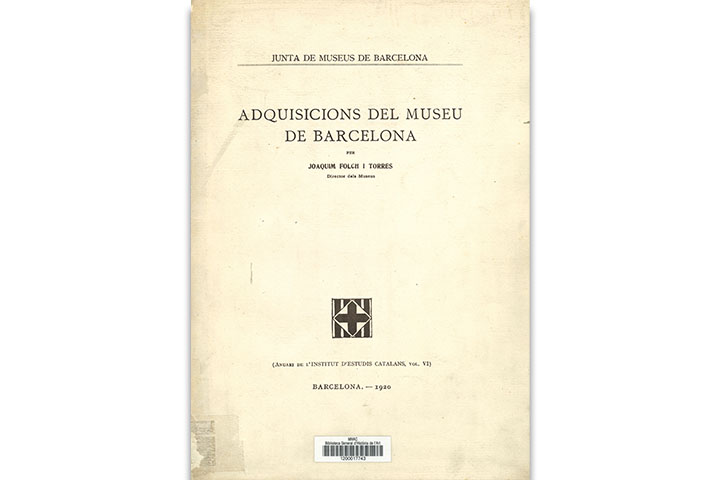
Folch i Torres, Joaquim
Barcelona: Junta de Museus de Barcelona, 1920
40 pp.
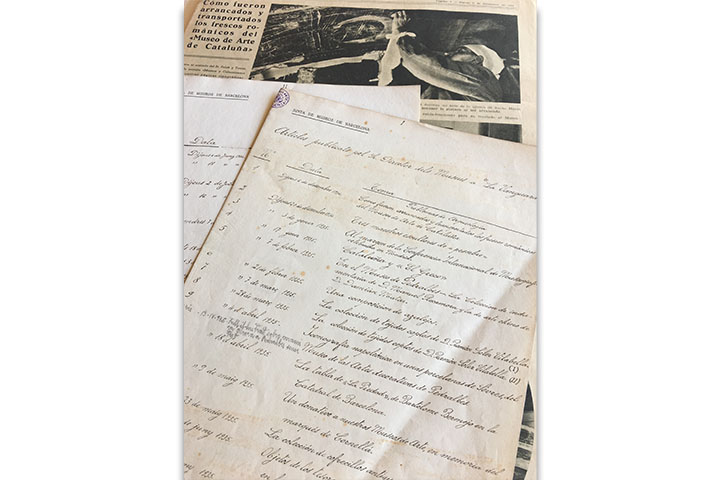
Folch i Torres, Joaquim
[S.l. : s.n.]
93 pp.
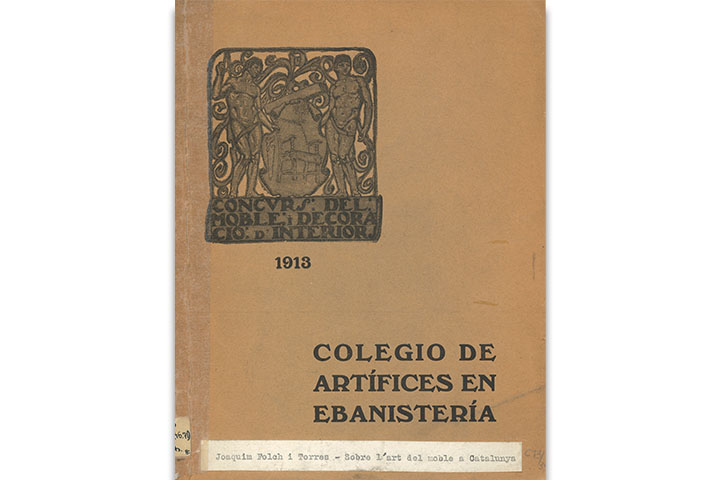
Folch i Torres, Joaquim
Barcelona: Imp. Elzeviriana de Borràs, Mestres i Ca., [1913?]
14 pp.
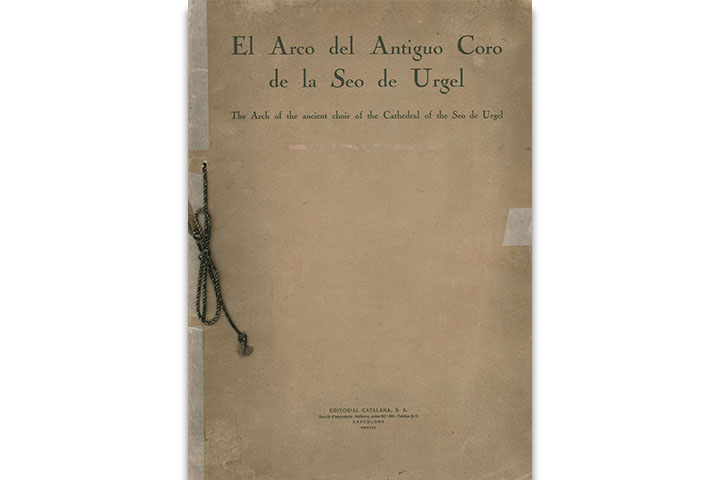
Folch i Torres, Joaquim
Barcelona: Editorial Catalana, 1919
[14] pp.
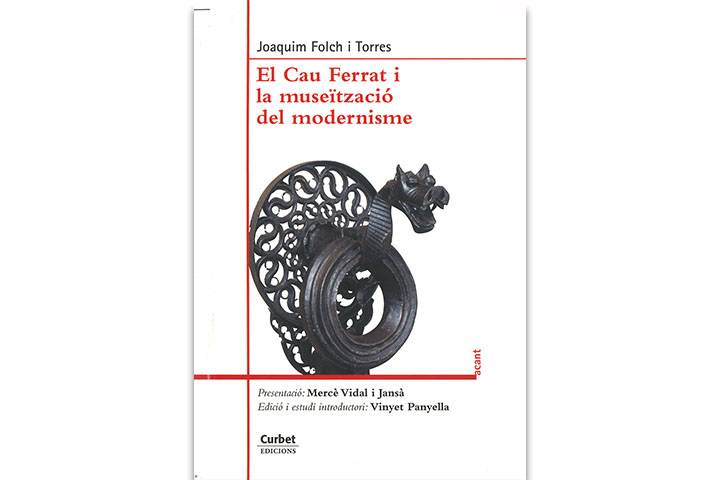
Folch i Torres, Joaquim
Girona: Curbet Edicions, 2013
238 pp.
ISBN 9788494187742
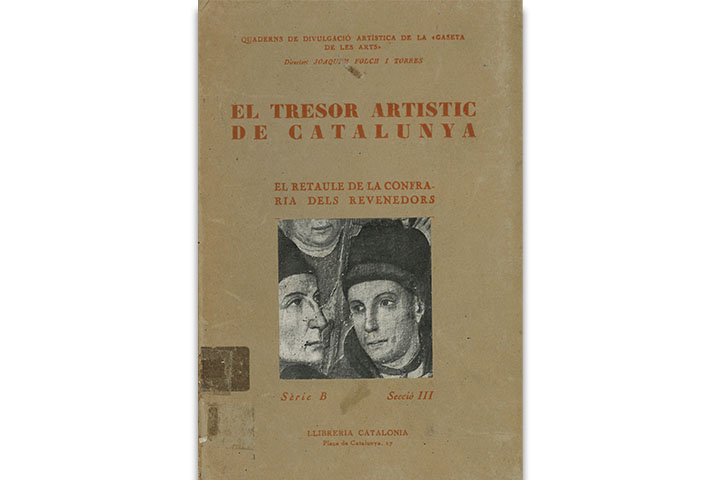
Folch i Torres, Joaquim
Barcelona: Editorial Políglota, [1926?]
[7] pp.
![Els Teixits del Museu de Barcelona: formació de la col·lecció... [Manuscrit] Els Teixits del Museu de Barcelona: formació de la col·lecció... [Manuscrit]](https://www.museunacional.cat/sites/default/files/paragraphs/horizontal_gallery/fc/images/9_8.jpg)
Folch i Torres, Joaquim
Barcelona, 1914
1 v. (102 pp, 98 f. De làm.)
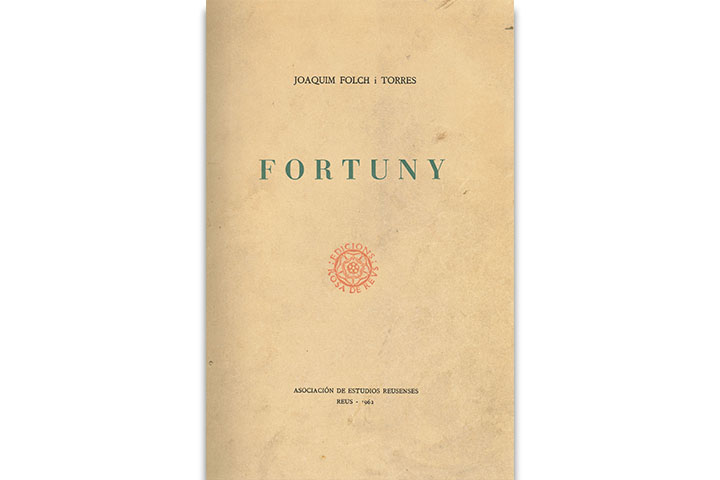
Folch i Torres, Joaquim
Reus: Asociación de Estudios Reusenses, 1962
182 pp.
DL B. 14559-1962
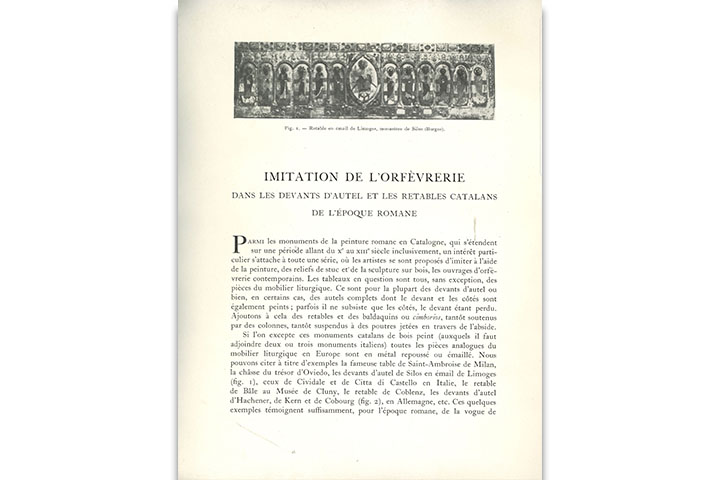
Folch i Torres, Joaquim
[S.l. : s.n. ca. 1930]
Pp. [248]-256
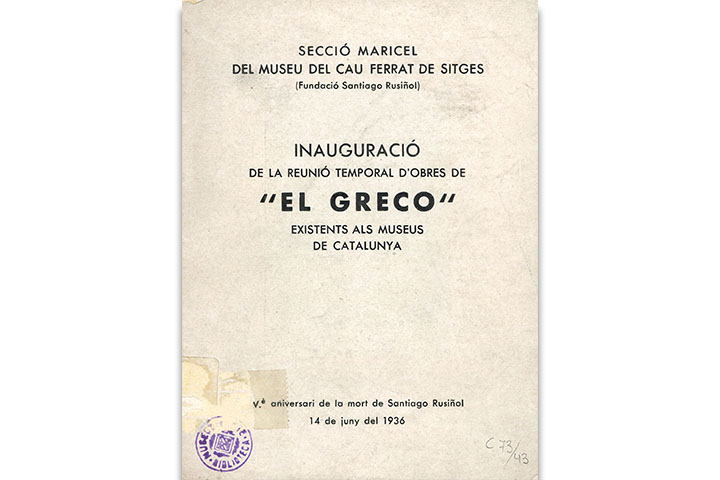
Folch i Torres, Joaquim
[S.l. : s.n.], 1936
[12] pp.
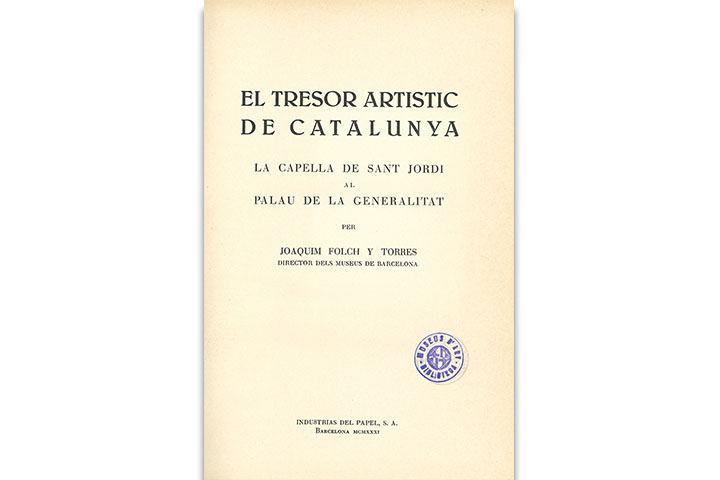
Folch i Torres, Joaquim
Barcelona: Industrias del Papel, 1931
16 pp.
![La Pintura al Reialme d’Aragó als segles XIV i XV [Manuscrit] La Pintura al Reialme d’Aragó als segles XIV i XV [Manuscrit]](https://www.museunacional.cat/sites/default/files/paragraphs/horizontal_gallery/fc/images/20_8.jpg)
Folch i Torres, Joaquim
ca. 1931
[14] f.
![La Pintura catalana del període del Romanticisme [Manuscrit] La Pintura catalana del període del Romanticisme [Manuscrit]](https://www.museunacional.cat/sites/default/files/paragraphs/horizontal_gallery/fc/images/21_9.jpg)
Folch i Torres, Joaquim
Premià de Dalt, 1932
35 f.
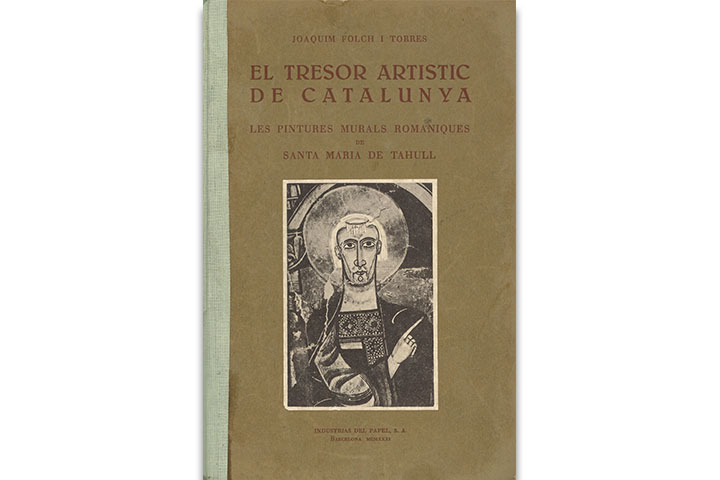
Folch i Torres, Joaquim
Barcelona: Industrias del papel, 1931
16 pp.
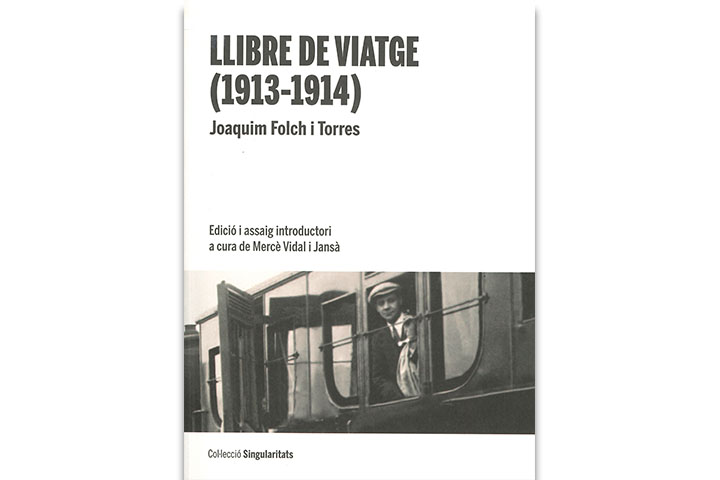
Folch i Torres, Joaquim
Barcelona: GRACMON, Grup de Recerca en Història de l’Art i del Disseny Contemporanis Universitat de Barcelona; Ajuntament de Barcelona, 2013
241 pp.
ISBN 9788447537365
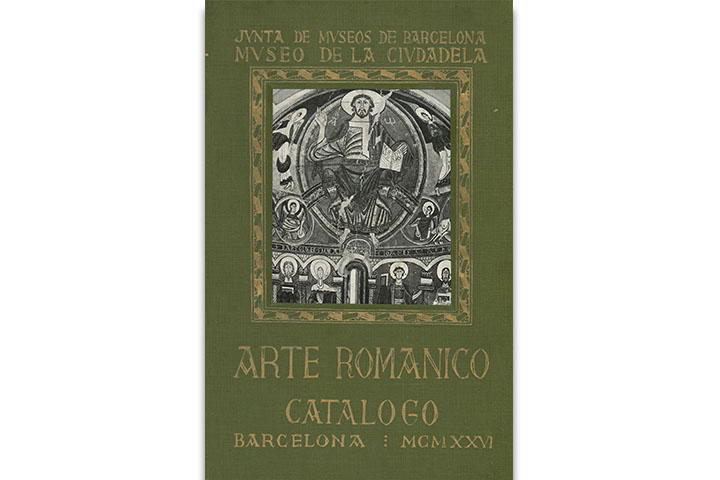
Folch i Torres, Joaquim
Barcelona: Junta de Museos de Barcelona, 1926
139 pp.
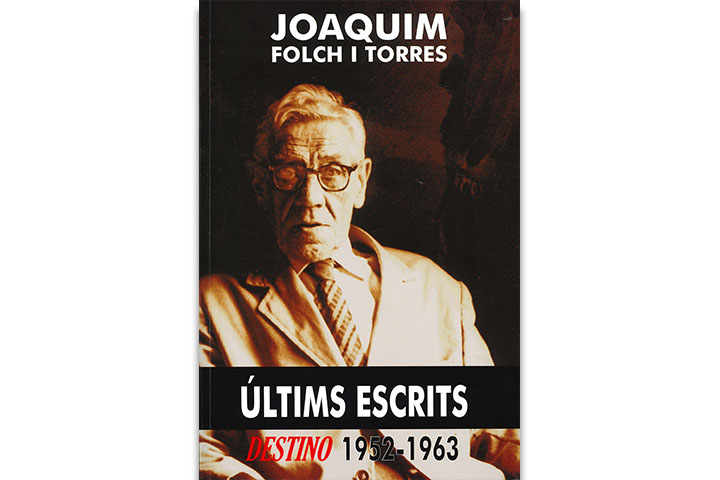
Folch i Torres, Joaquim
Palau-solità i Plegamans: Fundació Folch i Torres, 2009
681 pp.
ISBN 9788493369668

Fontbona, Francesc
Barcelona: Institut d’Estudis Catalans, 2000
10 pp.
ISBN 8472834948
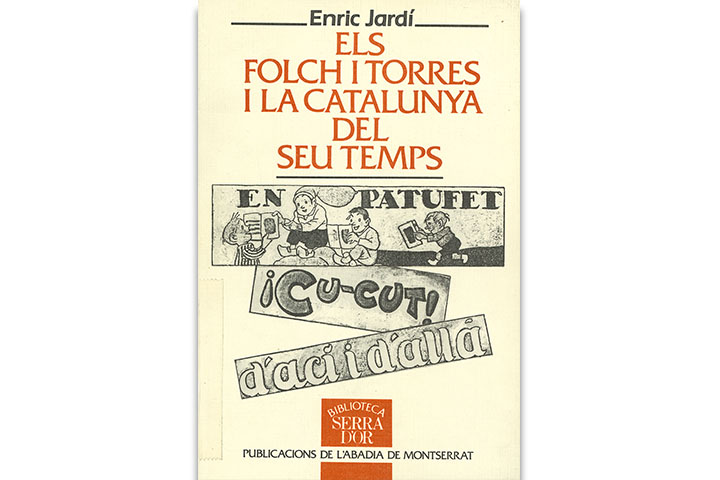
Jardí, Enric
Barcelona: Publicacions de l’Abadia de Montserrat, 1995
83 pp.
ISBN 8478266836
![Joaquim Folch i Torres [Enregistrament de vídeo] Joaquim Folch i Torres [Enregistrament de vídeo]](https://www.museunacional.cat/sites/default/files/paragraphs/horizontal_gallery/fc/images/31_7.jpg)
[Barcelona]: Generalitat de Catalunya. Departament de Cultura, Direcció General d’Arxius, Biblioteques, Museus i Patrimoni, 2013
1 videodisc (DVD)
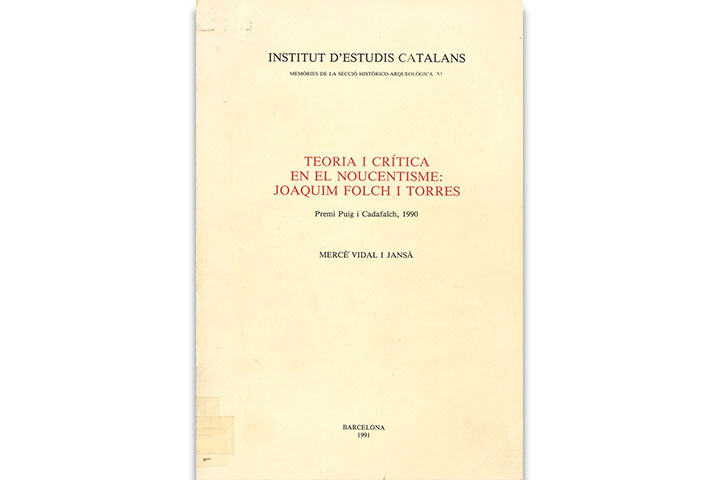
Vidal i Jansà, Mercè
Barcelona: Institut d’Estudis Catalans: Abadia de Montserrat, 1991
591 pp.
ISBN 8472831744
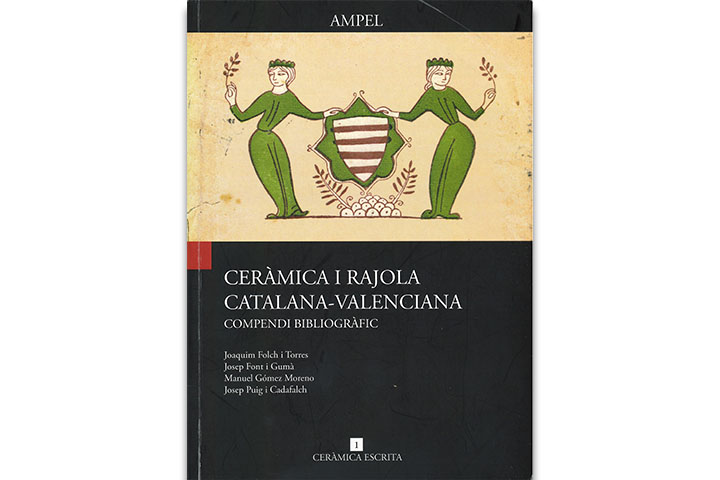
VV.AA.
Esplugues de Llobregat: Ampel, 2013
219 pp.
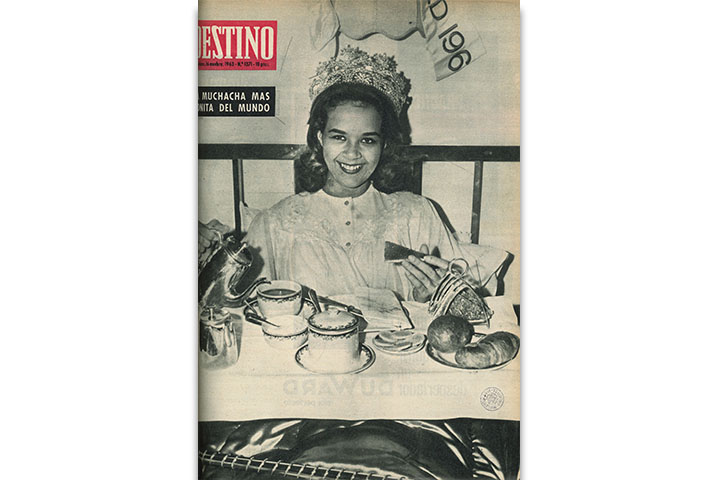
Ainaud de Lasarte, Joan
In: Destino: política de unidad
Barcelona: Destino, [1937]-1985
No. 1371 (16 nov. 1963), pp. 13-14.
ISSN 0011-9563
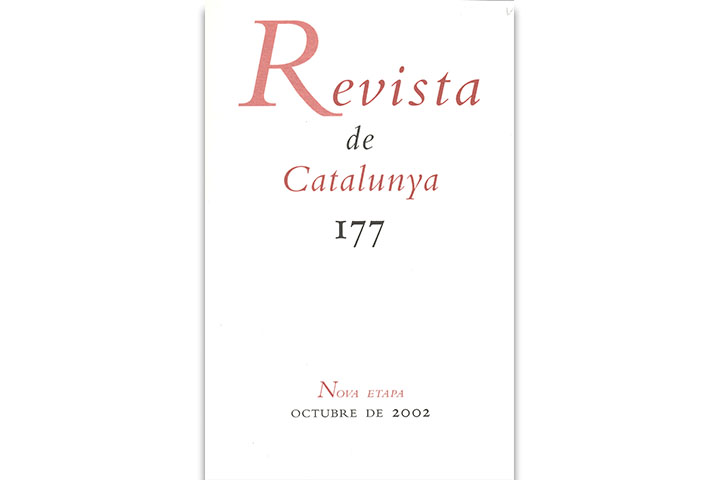
Albertí, Jordi
Barcelona: Fundació Revista de Catalunya, 1924
No. 177 (oct. 2002), pp. 95-110.
ISSN 0213-5876
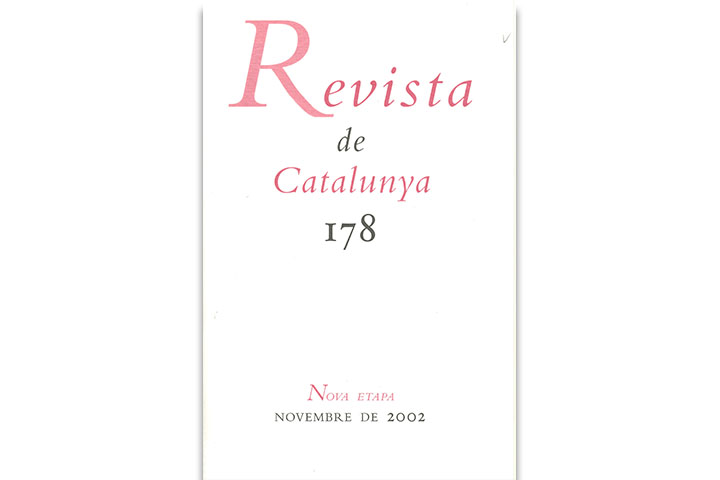
Albertí, Jordi
Barcelona: Fundació Revista de Catalunya, 1924
No. 178 (nov. 2002), pp. 70-88.
ISSN 0213-5876
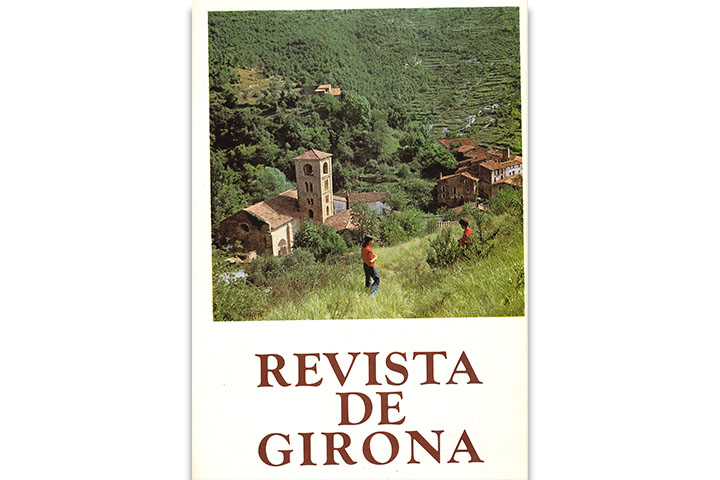
Batlle i Prats, Luis
Girona: Diputació de Girona, [1976]
No. 95 (2n sem. 1981), pp. 115-118.
ISSN 0211-2663

Cortés, Juan
In: Destino: política de unidad
Barcelona: Destino, [1937]-1985
No. 1371 (16 nov. 1963), p. 17.
ISSN 0011-9563
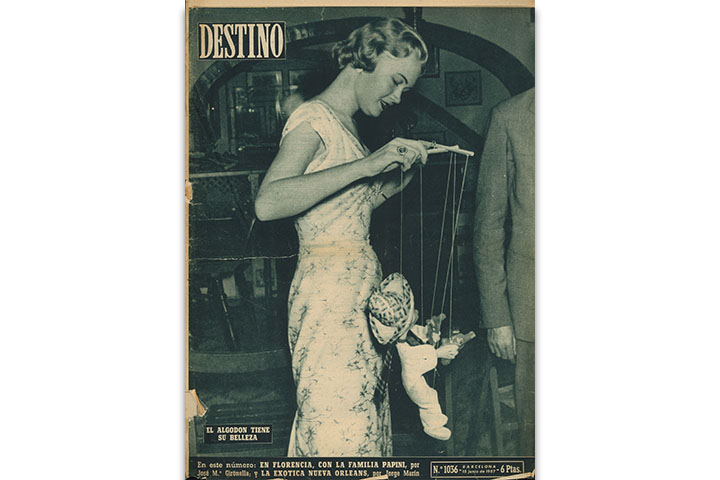
Cortés, Juan
In: Destino: política de unidad
Barcelona: Destino, [1937]-1985
No. 1036 (15 june 1957), p. 35.
ISSN 0011-9563
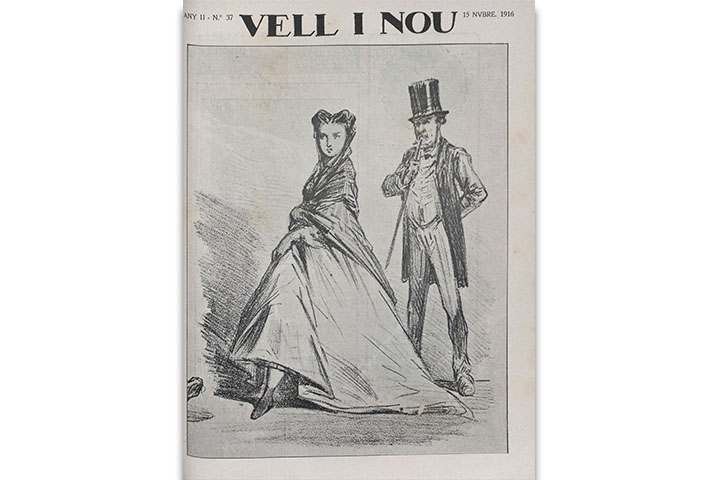
Barcelona: E. Gabañach (no. 1-10); F. Borràs (no. 11-22); Antonio López (no. 23-105); Librería de Arte M. Bayés (1920-1921), 1915-1921
No. 37 (nov. 1916), p. 283.
ISSN 1134-4326
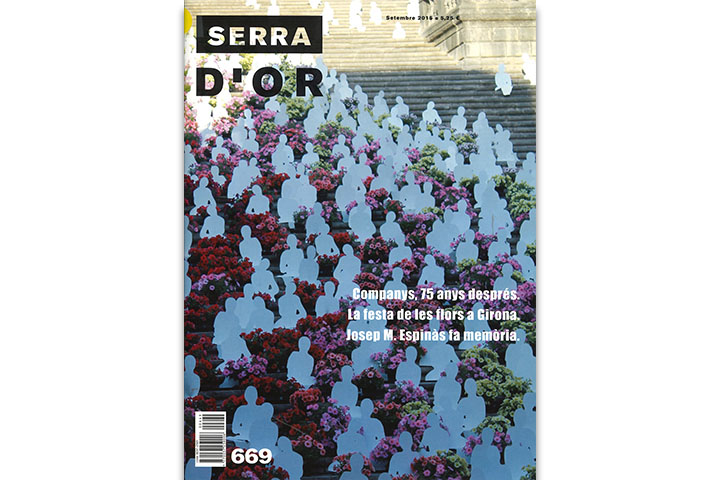
Domènech, Ignasi; Portell, Susanna
In: Serra d’or
Barcelona: Abadia de Montserrat, 1955
No. 669 (set. 2015), pp. 45-47.
ISSN 0037-2501

Folch i Soler, Joaquim
In: Serra d’or
Barcelona: Abadia de Montserrat, 1955-
No. 669 (sept. 2015), pp. 42-45.
ISSN 0037-2501
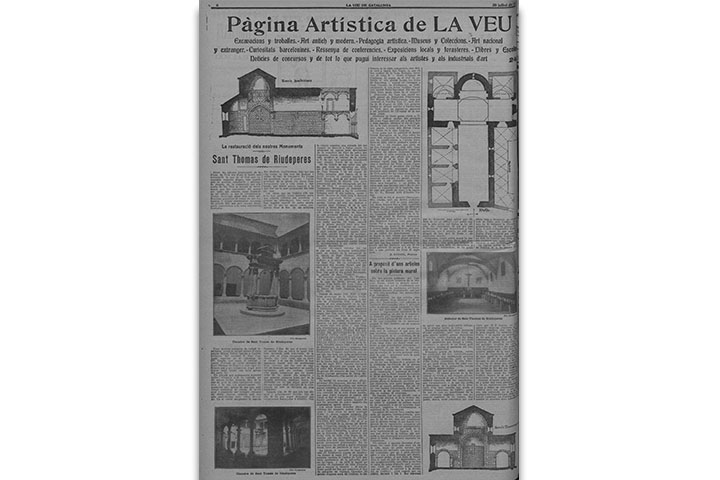
Folch i Torres, Joaquim
In: La Veu de Catalunya. Pàgina artística
Barcelona: La Veu de Catalunya, 1909-[1928?]
No. 241 (30 July 1914), p. 6.
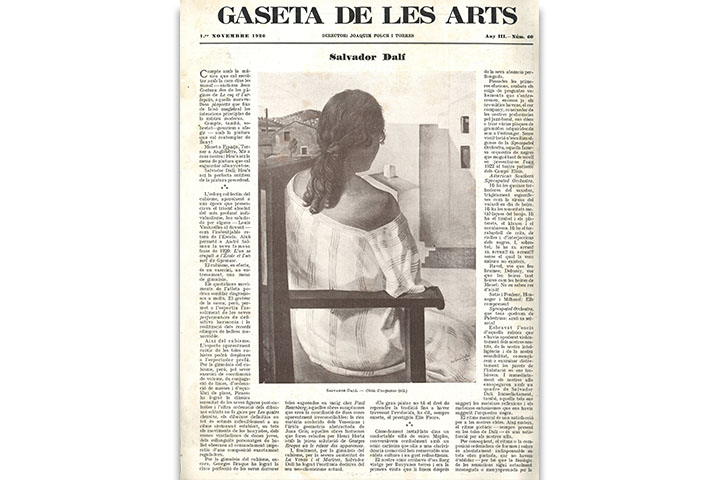
Folch i Torres, Joaquim
Barcelona: Imp. A. López Llausas, 1924-1930
No. 60 (1926), pp. 5-6.
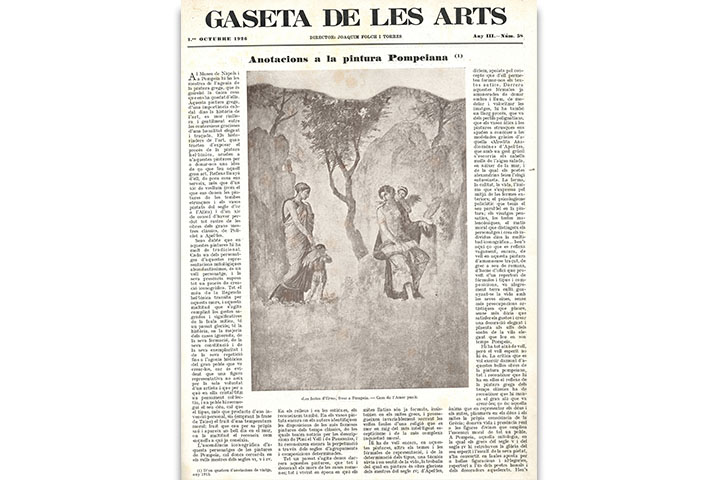
Folch i Torres, Joaquim
Barcelona: Imp. A. López Llausas, 1924-1930
No. 58 (1926), pp. 1-2.
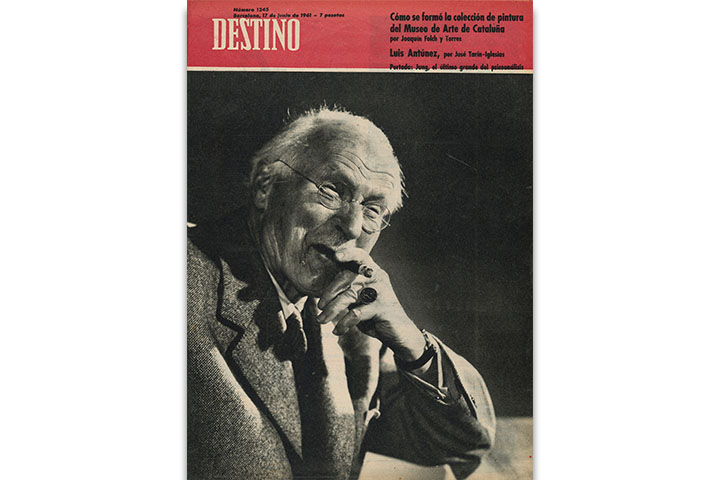
Folch i Torres, Joaquim
In: Destino: política de unidad
Barcelona: Destino, [1937]-1985
No. 1245 (17 june 1961), pp. 13-16.
ISSN 0011-9563
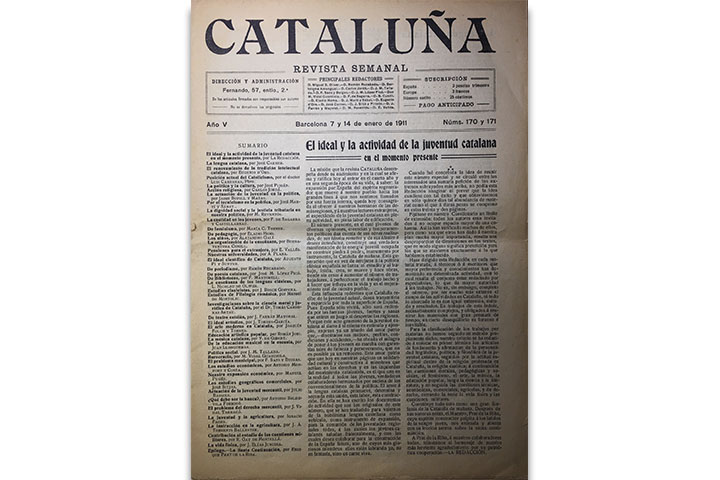
Folch i Torres, Joaquim
In: La Cataluña: revista semanal
Barcelona: [s.n.], 1907-1912 (Barcelona: Tip. La Académica)
No. 170-171 (7-14 January 1911), pp. 20-21.
ISSN 2485-9737
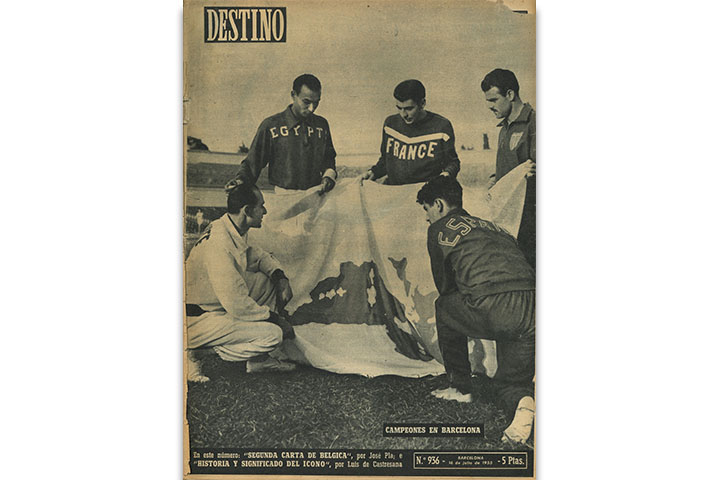
Folch i Torres, Joaquim
In: Destino: política de unidad
Barcelona: Destino, [1937]-1985
No. 936 (16 July 1955), p. 29.
ISSN 0011-9563
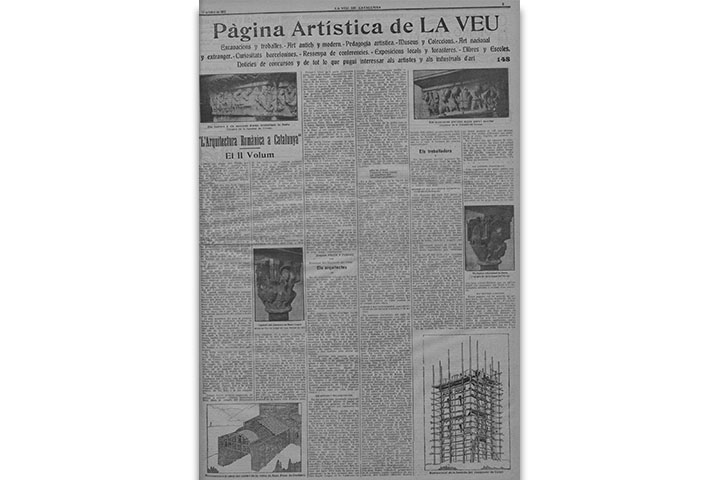
Folch i Torres, Joaquim
In: La Veu de Catalunya. Pàgina artística
Barcelona: La Veu de Catalunya, 1909-[1928?]
No. 148 (17 oct. 1912), p. 5.
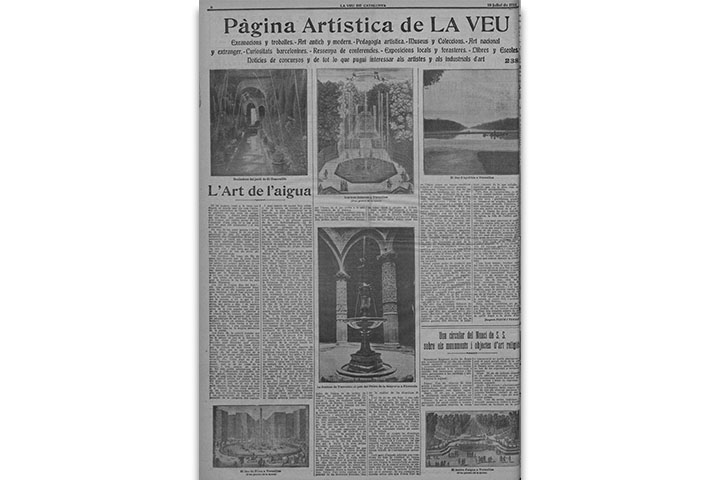
Folch i Torres, Joaquim
In: La Veu de Catalunya. Pàgina artística
Barcelona: La Veu de Catalunya, 1909-[1928?]
No. 238 (10 July 1914), p. 6
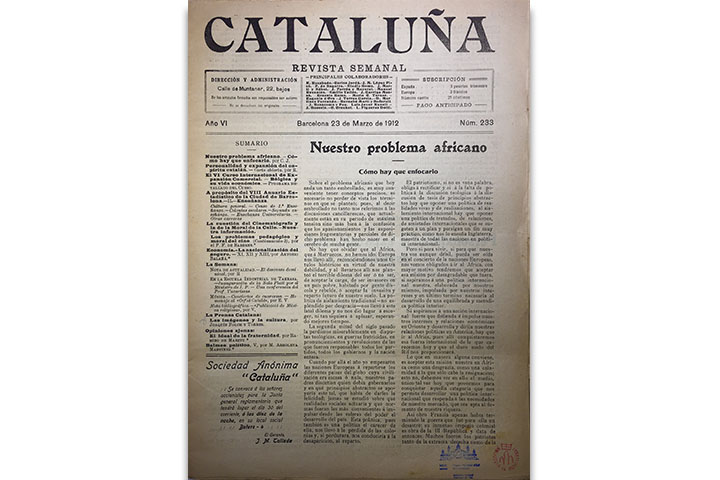
Folch i Torres, Joaquim
In: La Cataluña: revista semanal
Barcelona: [s.n.], 1907-1912 (Barcelona: Tip. La Académica)
No. 233 (23th march 1912), pp. 179-180.
ISSN 2485-9737
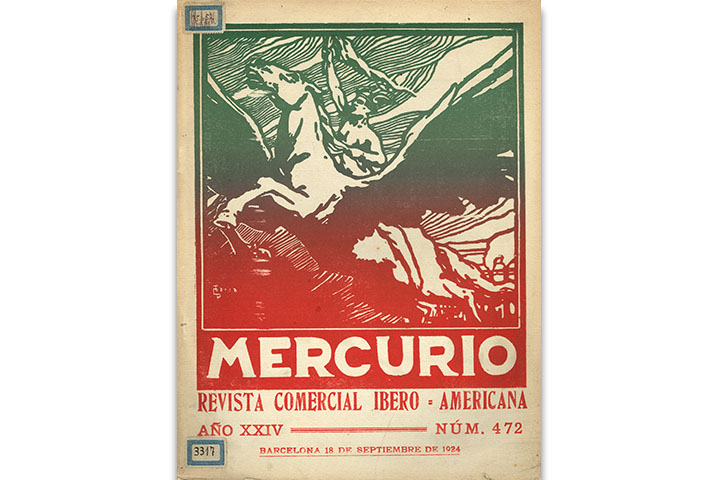
Folch i Torres, Joaquim
In: Mercurio
Barcelona: J. Puigdollers Macià, 1901-[1938?]
No. 472 (18 sept. 1924), pp. 285-287.
ISSN 2172-2692
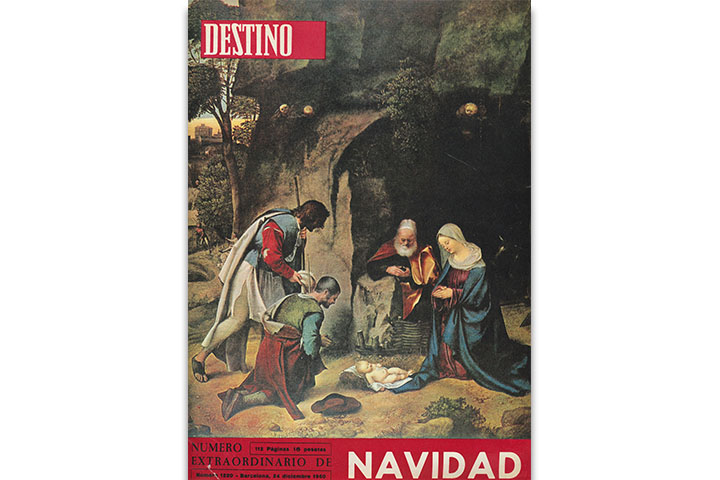
Folch i Torres, Joaquim
In: Destino: política de unidad
Barcelona: Destino, [1937]-1985
No. 1220 (24 des. 1960), pp. 67-71.
ISSN 0011-9563
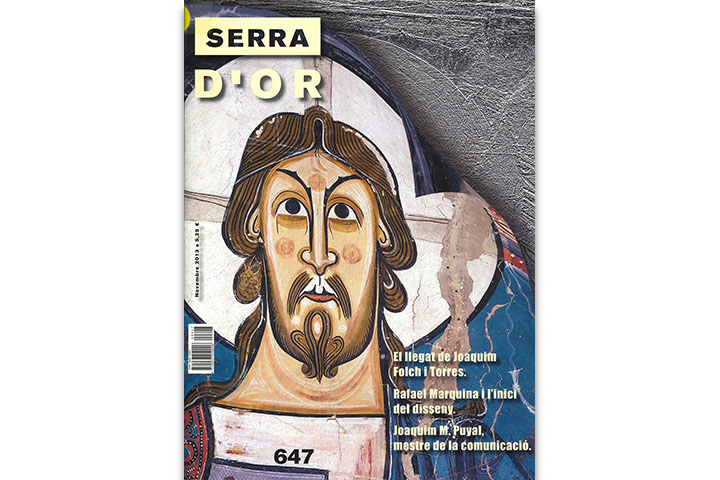
Fontbona, Francesc
In: Serra d’or
Barcelona: Abadia de Montserrat, 1955
No. 647 (nov. 2013), pp. 26-31.
ISSN 0037-2501
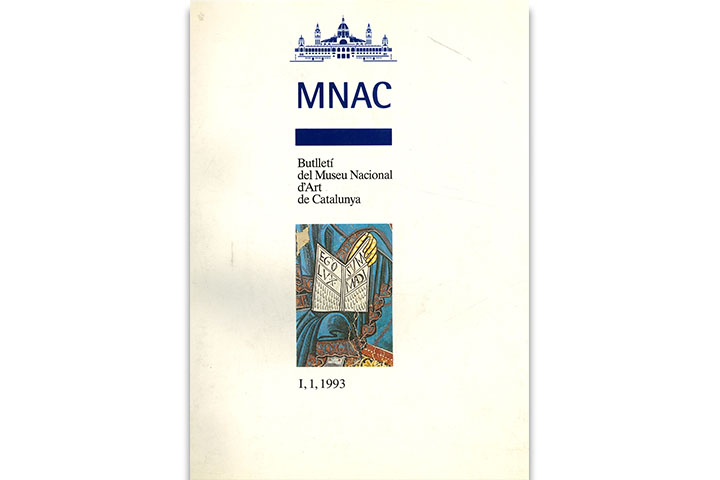
Guardia, Milagros
In: Butlletí del Museu Nacional d’Art de Catalunya
Barcelona: Museu Nacional d’Art de Catalunya: Enciclopèdia Catalana, Proa, 1993-
No. 1 (1993), pp. 303-322.
ISSN 1133-6455
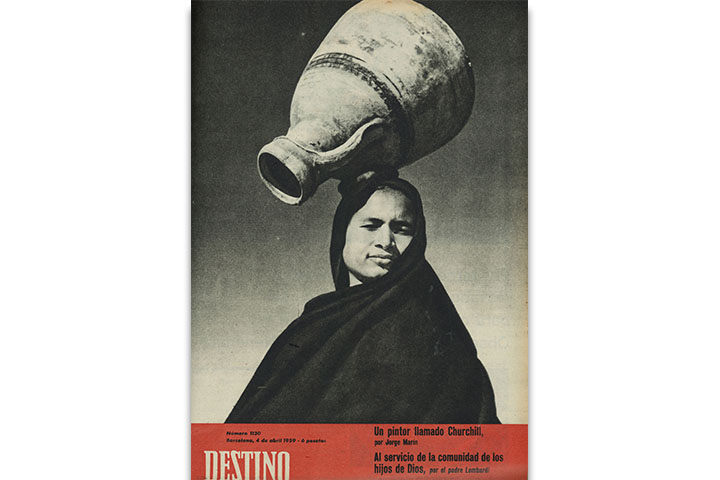
In: Destino: política de unidad
Barcelona: Destino, [1937]-1985
No. 1130 (4 abr. 1959), p. 31.
ISSN 0011-9563
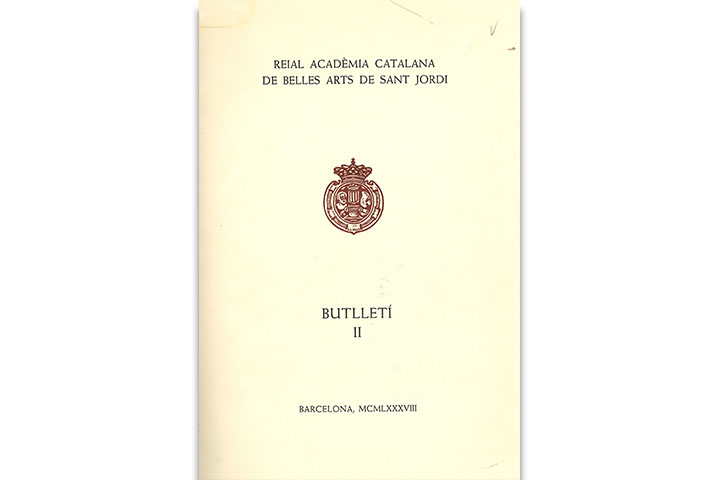
Marès, Frederic
In: Butlletí de la Reial Acadèmia Catalana de Belles Arts de Sant Jordi
Barcelona: Reial Acadèmia Catalana de Belles Arts de Sant Jordi, 1986
No. 2 (1988), pp. 163-168.
ISSN 1133-0341
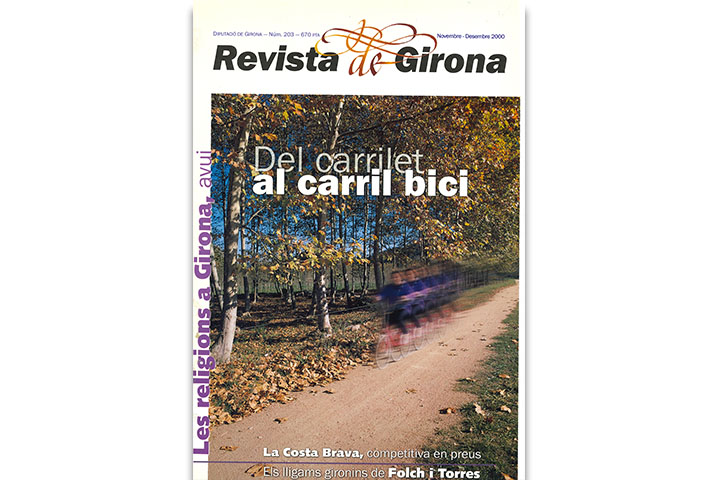
Pagès, David
Girona: Diputació de Girona, [1976]-
No. 203 (2000), pp. 48-51.
ISSN 0211-2663

Pagès i Paretas, Montserrat
In: Serra d’or
Barcelona: Abadia de Montserrat, 1955
No. 647 (nov. 2013), pp. 31-35.
ISSN 0037-2501
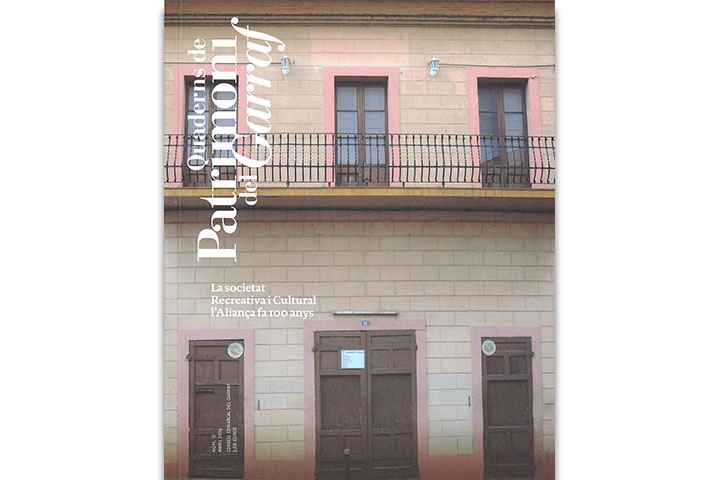
Panyella, Vinyet
In: Quaderns de patrimoni del Garraf
Vilanova i la Geltrú: Consell Comarcal del Garraf, Àrea de Patrimoni, 2004
No. 17 (abr. 2014), pp. 21-22.
ISSN 2013-6900
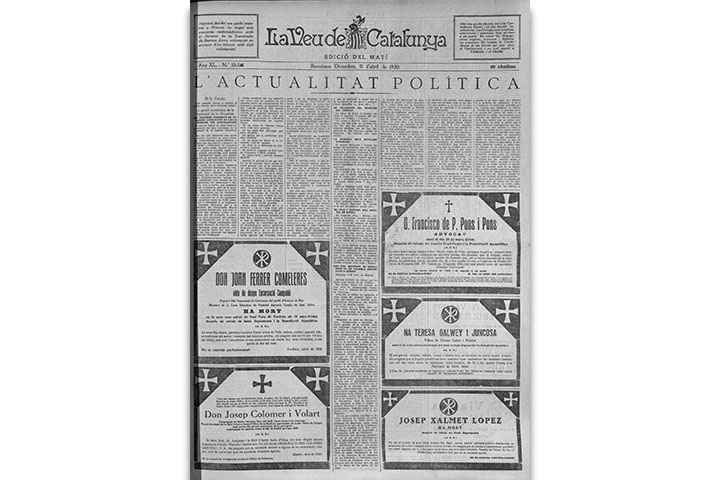
Puig i Cadafalch, Josep
In: La Veu de Catalunya. Pàgina artística
Barcelona: La Veu de Catalunya, 1909-[1928?]
No. 10561 (11 april 1930), p. 5
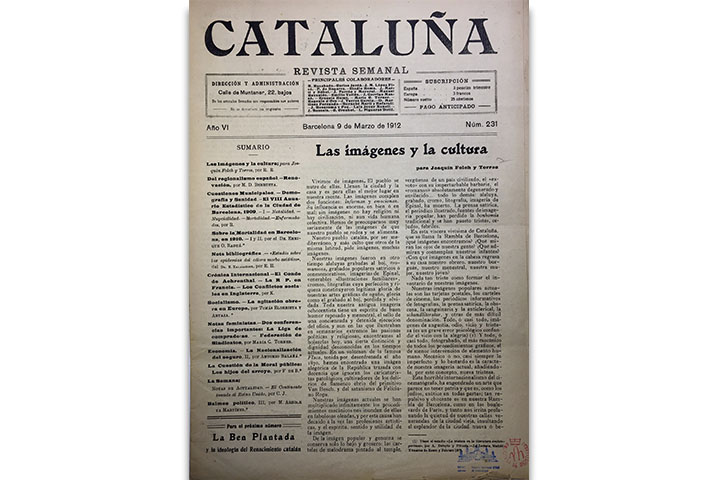
Rucabado, Ramón
In: La Cataluña: revista semanal
Barcelona: [s.n.], 1907-1912 (Barcelona: Tip. La Académica)
No. 231 (9 de march 1912), pp. 137-139.
ISSN 2485-9737
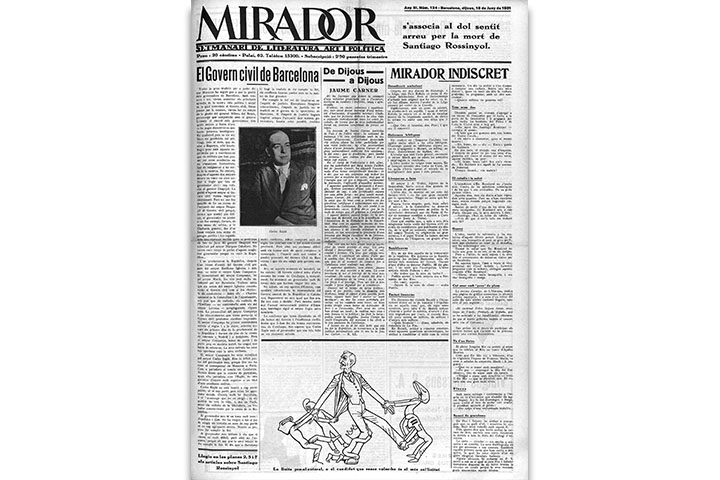
Sindreu i Pons, Carles
In: Mirador: setmanari de literatura, art i política
Barcelona: [s.n.], 1929-1937 (Barcelona: La Neotípia)
No. 124 (18 june 1931), p. 3.
ISSN 1886-9246
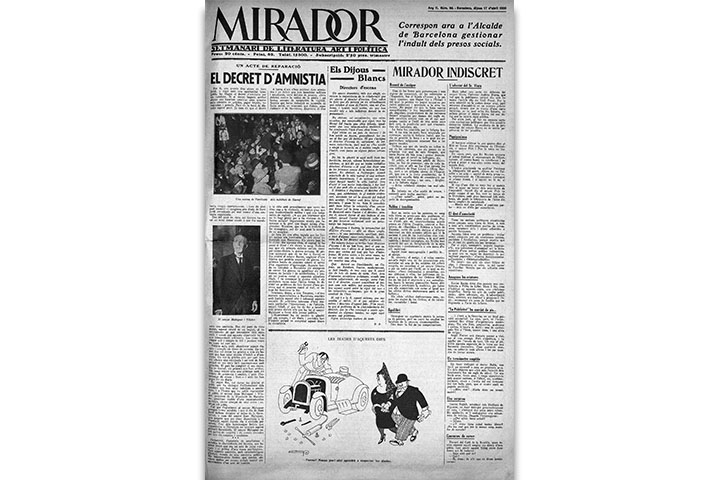
In: Mirador: setmanari de literatura, art i política
Barcelona: [s.n.], 1929-1937 (Barcelona: La Neotípia)
No. 64 (17 april 1930), p. 7.
ISSN 1886-9246
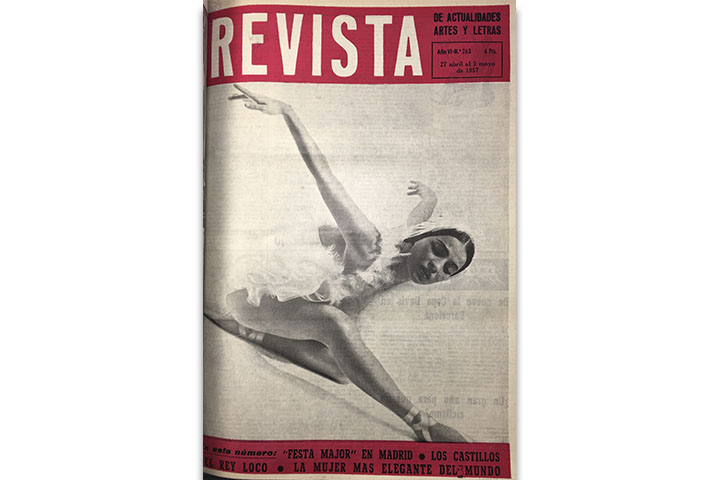
In: Revista de actualidades, arte y letras
Barcelona: Gráf. De Fomento, 1955-1960
No. 263 (27 april - 3 may 1957), p. 12.
ISSN 9956-8160

Vidal, Mercé
In: Serra d’or
Barcelona: Abadia de Montserrat, 1955-
No. 647 (nov. 2013), pp. 21-25.
ISSN 0037-2501
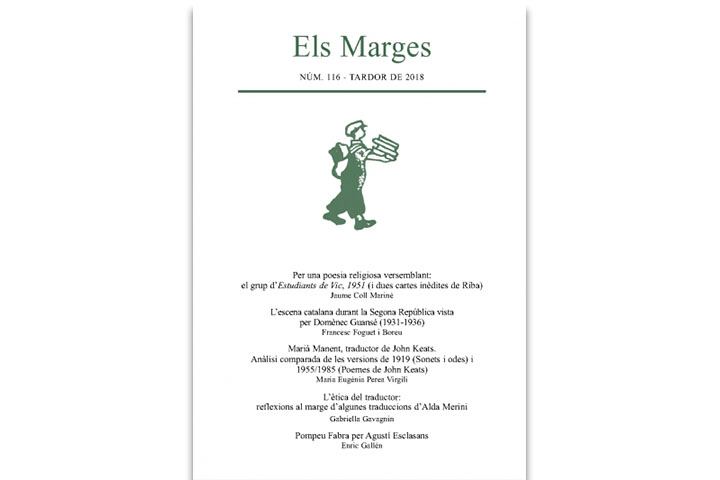
Castellanos Vila, Jordi
Tres cartes de Joaquim Folch i Torres a Raimon Caselles
Barcelona: Curial Edicions Catalanes, 1974-
No. 67, 2000, pp. 67-74
ISSN 0210-0452
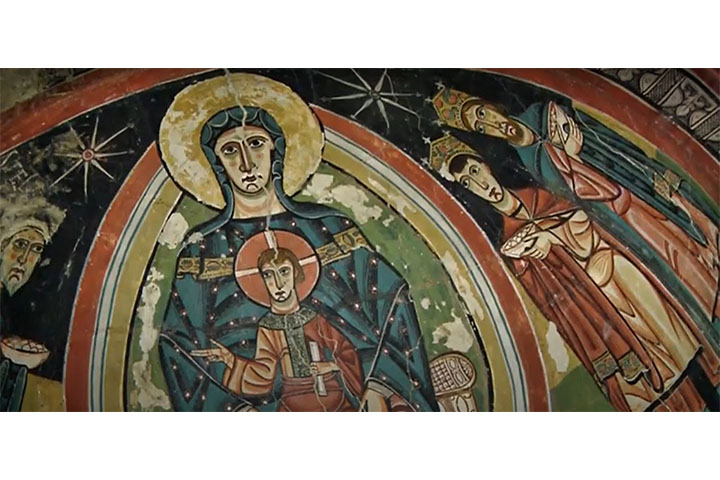
Albert Bonet
Joaquim Folch i Torres: la lluita pel patrimoni artístic
25 th March 2020
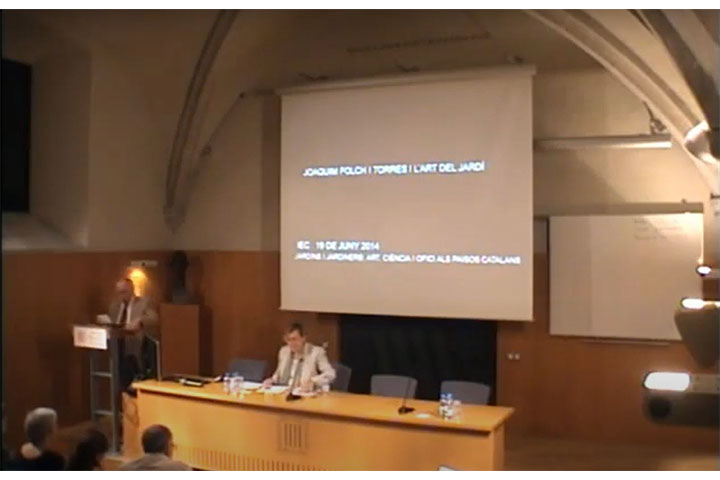
Institut d’Estudis Catalans
Joaquim Folch i Torres i l’art del jardí
20th May 2015
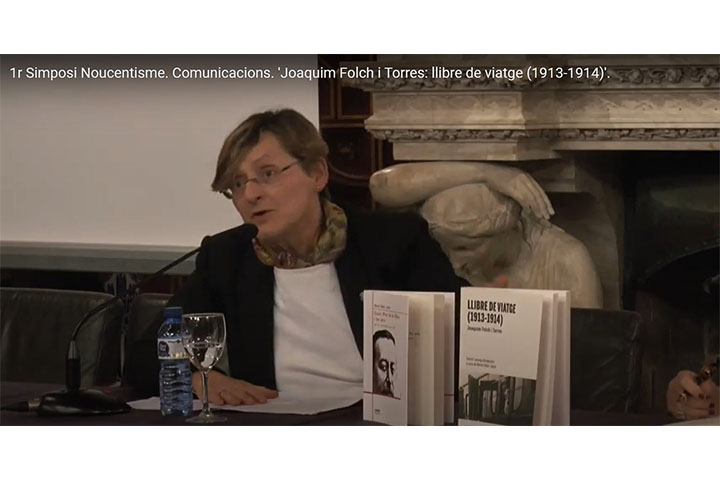
Noucentisme Catalunya
1r Simposi Noucentisme. Comunicacions. ‘Joaquim Folch i Torres: llibre de viatge (1913-1914)’.
12th March 2015

Gumà, Montserrat
La “vida privada” del museu: dels anys trenta a avui
Blog Museu Nacional d’Art de Catalunya
3rd September 2015
The Romanesque Art at the Museu Nacional d'Art de Catalunya
On the occasion of the Third International Congress “Romanesque Art: Patrons and Processes”, which was held in Barcelona at the Museu Nacional, from 7th to 9th April; the Library presents a small exhibition of documents related to the origins of this singular collection, its museography over the years: 1924 (J.Folch i Torres), 1934 (Joaquim Folch i Torres), 1961 (Joan Ainaud de Lasarte ) ,1973 (Joan Ainaud de Lasarte), 1995 (Gae Aulenti and Eduard Carbonell Esteller), 2011 (Maite Ocaña) , and the study and diffusion of this heritage (in this section with publications after the re-opening of the Museum in 1942).
All the documents exhibited belong to the collection of the Library.
1. The origins of the collections of Romanesque Art
La descoberta de la pintura mural romànica catalana: la col·lecció de reproduccions del MNAC / Milagros Guardia, Jordi Camps, Immaculada Lorés
Barcelona: Museu Nacional d'Art de Catalunya; Madrid: Electa, 1993
Lluís Domènech i Montaner: viatges per l'arquitectura romànica / Enric Granell, Antoni Ramon ; presentació Lluís Domènech i Girbau ; epíleg Manuel Castiñeiras, Gemma Ylla-Català
Barcelona: Col·legi d'Arquitectes de Catalunya, 2006
La Missió arqueològica del 1907 als Pirineus / comissari Santiago Alcolea Blanch
[Barcelona]: Fundació La Caixa. Obra Social: Fundació Institut Amatller d'Art Hispànic, 2008
La peinture décorative en France du XIe au XVIe siècle / par P. Gélis-Didot et H. Laffillée
Paris: Librairie Centrale d'Architecture, Ancienne Maison Morel, Librairies-imprimeries réunies, [ca. 1890]
Les Pintures murals catalanes / [Josep Pijoan Soteras, director]
[Barcelona]: Institut d'Estudis Catalans, [1907]-2001 (Barcelona: Thomas) - 5 fasc. (
Fascicle IV: Ginestarre de Cardós, Esterri de Cardós, Sta. Eulàlia d'Estahon, Sta. Maria de Mur, St. Pere d'Àger
Puig i Cadafalch i la col·lecció de pintura del MNAC / [textos Jordi Camps i Soria, Montserrat Pagès i Paretas, Gemma Ylla-Català]
Barcelona: MNAC, 2008
2. Museographies
El arte románico : exposición organizada por el Gobierno Español bajo los auspicios del Consejo de Europa : catálogo : Barcelona y Santiago de Compostela 1961 [S.l. : s.n.], 1962
Arte románico: guía / por J. Ainaud de Lasarte
Barcelona : Ayuntamiento de Barcelona, 1973
Catàleg del Museu d'Art de Catalunya: primera part: art romànic, art gòtic, art del Renaixement, art barroc
Barcelona : Junta de Museus, 1936
Guia art romànic / Museu Nacional d'Art de Catalunya ; [autors Eduard Carbonell i Esteller, Montserrat Pagès i Paretas, Jordi Camps i Soria, Teresa Marot]
Barcelona : MNAC, 1997
La Instal·lació de 1995 / Eduard Carbonell, Montserrat Pagès i Jordi Camps. – P. 31-37
A: Butlletí del Museu Nacional d’Art de Catalunya . – Núm. 3 (1999)
Museo de la Ciudadela: catálogo de la sección de arte románico / por Joaquín Folch y Torres
Barcelona : Junta de Museos de Barcelona, 1926
El Museu d’Art de Catalunya al Palau Nacional de Montjuïc/ Joaquim Folch i Torres. – P.171-191
A : Butlletí dels Museus d’Art de Barcelona . – Vol. IV, Núm. 36 (Maig 1934)
El romànic a les col·leccions del MNAC / Manuel Castiñeiras i Jordi Camps; amb la col·laboració de Joan Duran-Porta
[Barcelona] : MNAC : Abertis : Lunwerg, 2008
3. Study and promotion - (Later 1942)
Guia visual d'art romànic / Museu Nacional d'Art de Catalunya ; [autors: Jordi Camps i Montserrat Pagès ; amb la col·laboració de Gemma Ylla-Català]
Barcelona: Museu Nacional d'Art de Catalunya, 2002
L'Ornamentació en la pintura romànica catalana / Eduard Carbonell i Esteller
Barcelona: Artestudi, 1981
La pintura catalana: la fascinació del romànic / Joan Ainaud de Lasarte
Genève: Albert Skira; Barcelona: Carroggio, 1989
La Pintura romànica a Catalunya / Joan Sureda; versió catalana de Josefina Lluís i Lluís
Madrid : Alianza, 1982
Pintura e imaginería románicas / W.W.S. Cook y J. Gudiol Ricart
Madrid : Plus-ultra, 1950
Ars Hispaniae : Historia Universal del Arte Hispánico ; 6
Les pintures murals romàniques d'Olèrdola, Calafell, Marmellar i Matadars: (Estudi sobre la pintura mural del segle XI a Catalunya) / Xavier Barral i Altet
[Barcelona: Artestudi, 1980]
Prefiguració del Museu Nacional d'Art de Catalunya
Barcelona: Museu Nacional d'Art de Catalunya: Lunwerg, 1992
Sobre pintura romànica catalana / Montserrat Pagès i Paretas
Barcelona: Publicacions de l'Abadia de Montserrat, 2005
Fleuron
Read more
Moulding
Read more
Polinyà hoard
Read more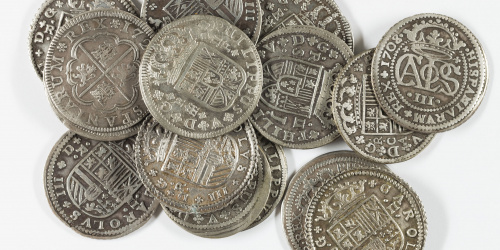
1907-1933 Consolidation and early travels
In 1907, The Barcelona Museums Board creates the Special Library Committee. Two aspects should be mentioned about this period: on one hand the important efforts that Josep Puig i Cadafalch and Joaquim Folch i Torres made to consolidate the Library, and on the other the notable enrichment of the...
Read more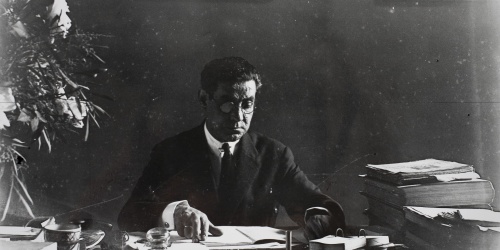



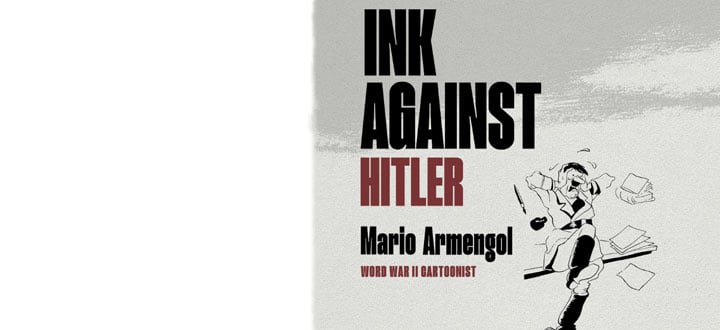






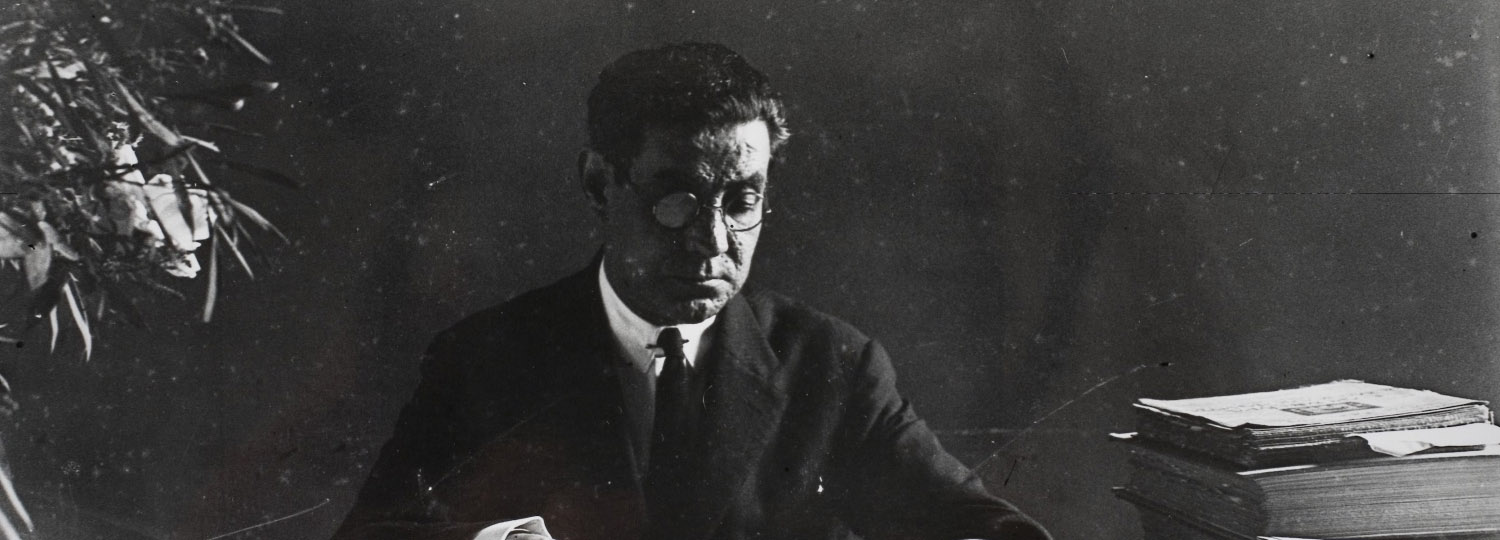

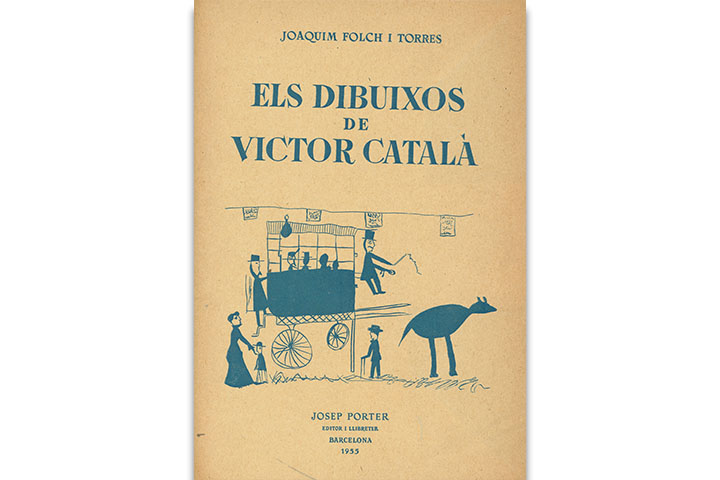
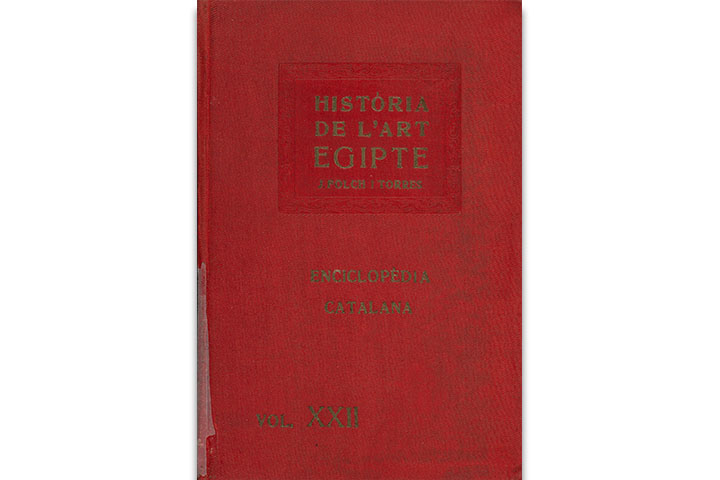
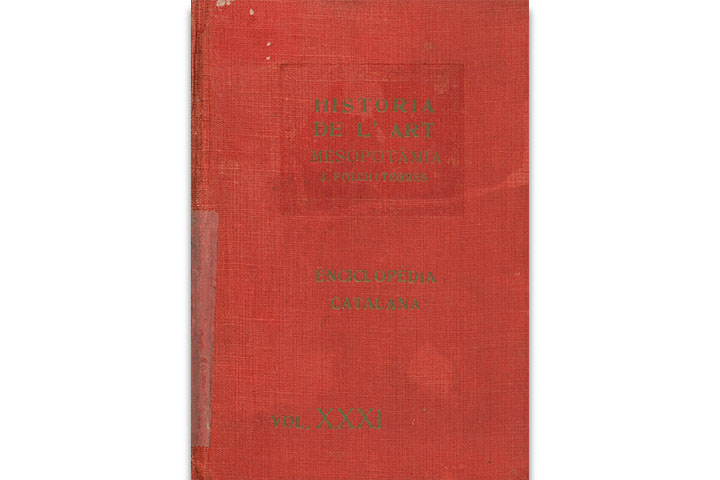
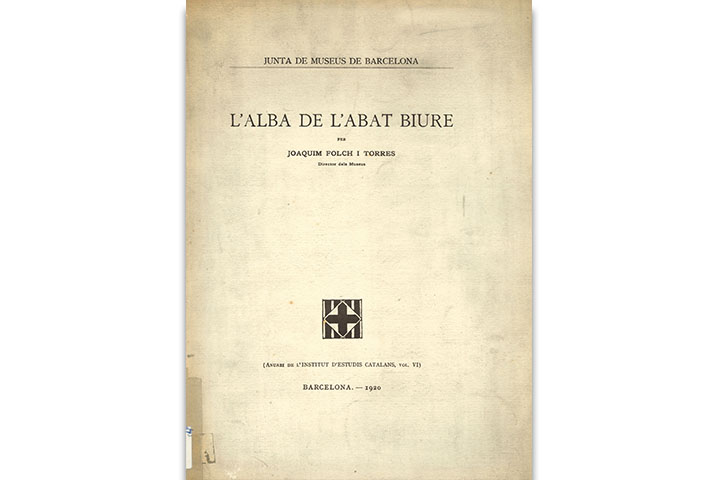
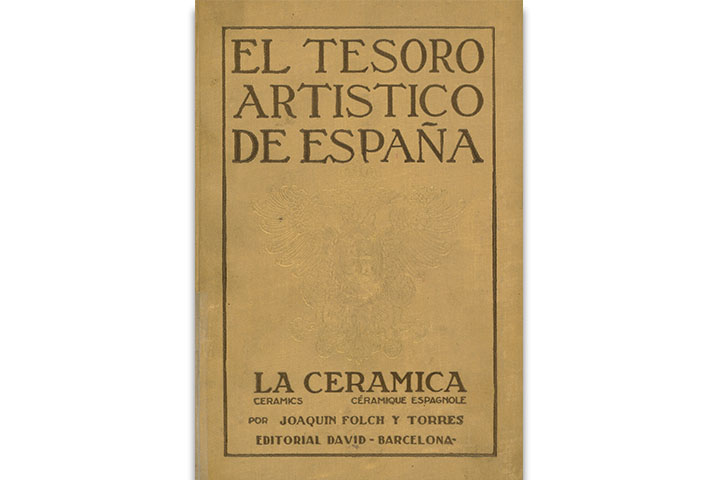
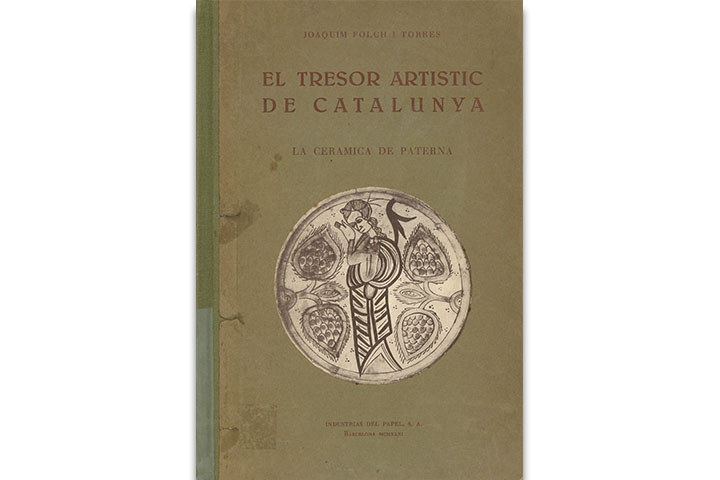
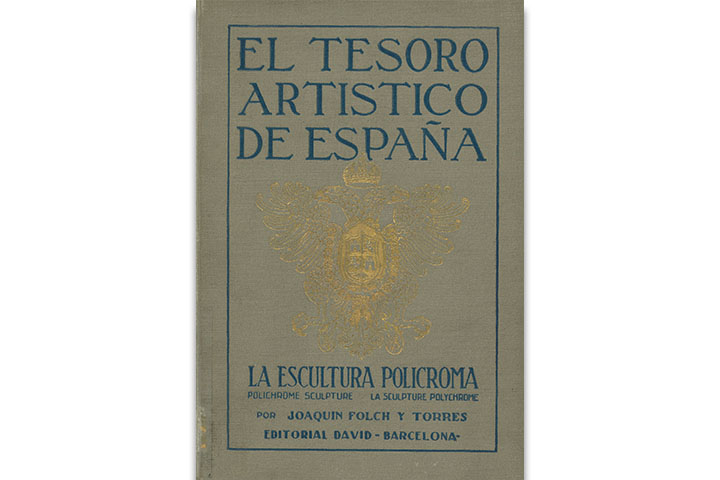
![La Pintura neoclassica a Catalunya [Manuscrit] La Pintura neoclassica a Catalunya [Manuscrit]](https://www.museunacional.cat/sites/default/files/paragraphs/horizontal_gallery/fc/images/22_9.jpg)
